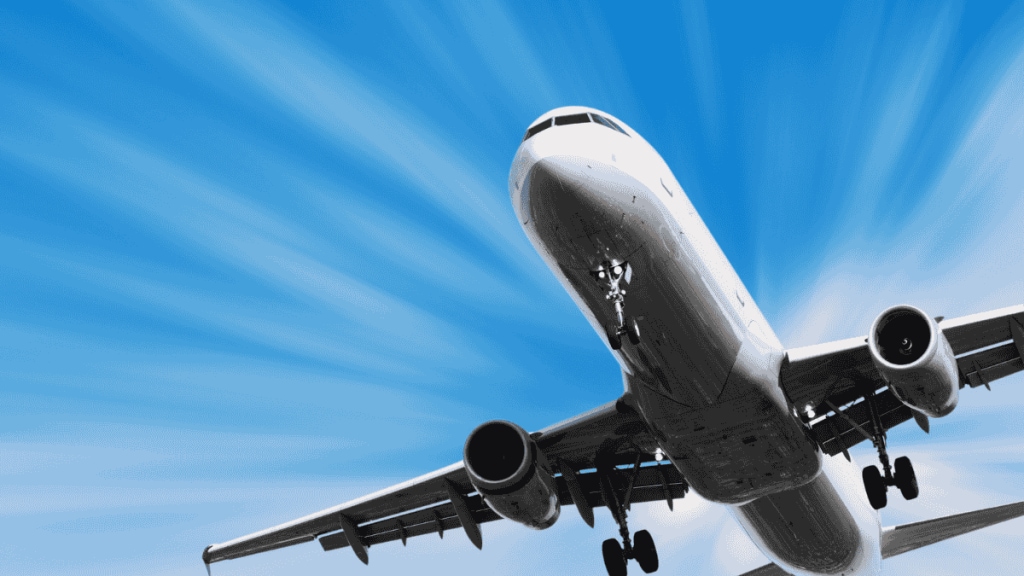India’s aviation sector hit turbulence in June as the month started with a strong growth of 9–10 per cent, but traffic dipped sharply in the second half following the crash of Air India Flight 171 on June 12, which shook passenger sentiment and forced the airline to cut flights for safety checks.
According to a report by Jefferies India’s domestic air traffic grew by 3 per cent year-on-year in June 2025, slightly up from 2 per cent in May.
1. IndiGo gains, Air India struggles
IndiGo continued to lead the market with a 9 per cent year-on-year growth in June and held a stable market share of 64.5 per cent. Meanwhile, Air India saw a 4 per cent drop in domestic traffic and held a 27.1 per cent share. SpiceJet slipped to a new low of 1.9 per cent market share.
IndiGo’s occupancy remained steady at 85.4 per cent in June, while Air India improved slightly to 81.5 per cent. But overall load factors declined in the second half of June as passengers remained cautious after the tragic plane crash reportedly killed 260 people including 19 people on ground.
2. Air India’s losses widen
Tata Sons, the owner of Air India, reported a sharp increase in the airline’s losses. The carrier lost nearly Rs 10,900 crore in FY25, up from Rs 74,000 crore the year before. Though revenue rose 15 per cent year-on-year to Rs 76,800 crore, the airline continued to face loss, especially at its low-cost arm, Air India Express.
After the crash, the airline temporarily reduced its flights both within India and on international routes. While some services are back, many remain grounded for safety checks. Full restoration is expected by October 2025.
3. DGCA tightens oversight after faulty engine switch, aborted takeoffs
The Air India crash was not an isolated event. The past two months have seen several safety-related incidents across Indian airlines including IndiGo like emergency landings and aborted takeoffs. These events have drawn sharp attention from the Directorate General of Civil Aviation (DGCA), which has issued multiple technical advisories and review orders to ensure safety compliance.
The Air India crash, reportedly involving a faulty engine fuel control switch, has triggered heightened scrutiny and operational adjustments across airlines.
4. IndiGo adds new routes, invests in tech, and leadership changes
IndiGo ended FY25 with revenue of Rs 80,800 crore and a profit of Rs 7,587 crore.IndiGo also carried the most passengers—104 million domestically and 14 million internationally—maintaining its dominant position in India’s aviation market.
Continuing its international push, IndiGo launched direct flights from Mumbai to Amsterdam and Manchester in June. The airline also signed a codeshare agreement with Jetstar Airways, opening up new connections via Singapore, Bangkok and Phuket to Sydney, Gold Coast and Auckland.
The carrier’s venture capital arm, IndiGo Ventures, made its first investment in Jeh Aerospace, a startup focusing on high-precision aerospace and defence manufacturing.
In July, the company appointed Amitabh Kant as a non-executive director and launched direct flights from Mumbai to Amsterdam and Manchester.
5. SpiceJet adds planes, gets legal relief
SpiceJet signed a deal to lease five Boeing 737 aircraft, which are expected to join its fleet in October this year. The airline also received relief from the Supreme Court, which dismissed a Rs 1,320 crore damages claim by Kalanithi Maran and KAL Airways.
Aircraft deliveries remain slow, Jet fuel prices back on the rise
IndiGo received only one aircraft from Airbus in June, the same as the previous month. Air India received one from Boeing, while Akasa added two new Boeing planes. Overall deliveries are expected to pick up in the second half of the year, especially for IndiGo, which usually receives the bulk of its fleet additions then. Aviation turbine fuel (ATF) prices went up 8 per cent month-on-month in July to Rs 90,000 per kilolitre. This comes after small declines in May and June. For Q2 FY26 so far, prices are up 4 per cent quarter-on-quarter but still 7 per cent lower compared to last year.
Jefferies highlights that a possible increase in fuel prices (ATF/crude), a weaker Indian rupee, and a drop in railway ticket prices might pull passengers away from air travel and could impact aviation growth, particularly IndiGo’s performance.


